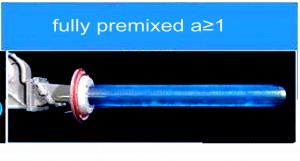- Afrikaans
- Albanian
- Amharic
- Arabic
- Armenian
- Azerbaijani
- Basque
- Belarusian
- Bengali
- Bosnian
- Bulgarian
- Catalan
- Cebuano
- China
- China (Taiwan)
- Corsican
- Croatian
- Czech
- Danish
- Dutch
- English
- Esperanto
- Estonian
- Finnish
- French
- Frisian
- Galician
- Georgian
- German
- Greek
- Gujarati
- Haitian Creole
- hausa
- hawaiian
- Hebrew
- Hindi
- Miao
- Hungarian
- Icelandic
- igbo
- Indonesian
- irish
- Italian
- Japanese
- Javanese
- Kannada
- kazakh
- Khmer
- Rwandese
- Korean
- Kurdish
- Kyrgyz
- Lao
- Latin
- Latvian
- Lithuanian
- Luxembourgish
- Macedonian
- Malgashi
- Malay
- Malayalam
- Maltese
- Maori
- Marathi
- Mongolian
- Myanmar
- Nepali
- Norwegian
- Norwegian
- Occitan
- Pashto
- Persian
- Polish
- Portuguese
- Punjabi
- Romanian
- Russian
- Samoan
- Scottish Gaelic
- Serbian
- Sesotho
- Shona
- Sindhi
- Sinhala
- Slovak
- Slovenian
- Somali
- Spanish
- Sundanese
- Swahili
- Swedish
- Tagalog
- Tajik
- Tamil
- Tatar
- Telugu
- Thai
- Turkish
- Turkmen
- Ukrainian
- Urdu
- Uighur
- Uzbek
- Vietnamese
- Welsh
- Bantu
- Yiddish
- Yoruba
- Zulu
सितम्बर . 28, 2024 16:20 Back to list
Three-Phase Fluid Heat Exchanger for Enhanced Energy Transfer and Efficiency
The Three-Fluid Heat Exchanger Concepts and Applications
In the realm of thermal engineering, heat exchangers play a crucial role in enhancing energy efficiency in various industrial processes. Among the different types of heat exchangers, three-fluid heat exchangers have garnered substantial attention due to their versatility and efficiency in utilizing thermal energy. This article will delve into the principles, design configurations, and applications of three-fluid heat exchangers.
Understanding the Basics
A three-fluid heat exchanger features three distinct fluid streams that interact in a controlled environment to transfer heat. The basic principle hinges on the second law of thermodynamics—heat naturally flows from a hotter fluid to a cooler one. In a three-fluid system, two main fluids exchange heat, while the third fluid either absorbs or provides heat to one of the other two. This configuration allows for improved thermal performance and the ability to recover waste heat effectively.
Design Configurations
Three-fluid heat exchangers can adopt several design configurations based on their intended use and process requirements. The most common types include
1. Shell-and-Tube Design In this configuration, three sets of tubes are arranged in a shell. Typically, one fluid flows through the tubes, while the other two fluids circulate around the outside. This design is robust and versatile, often used in oil and petrochemical industries.
2. Plate Heat Exchanger Consisting of multiple thin plates stacked together, this type allows for high surface area contact between fluids, enhancing heat transfer efficiency. Plate heat exchangers are suitable for lower-pressure applications and are often employed in food processing and HVAC systems.
3. Air-Cooled Heat Exchanger This design uses ambient air as one of the fluids, promoting energy efficiency by utilizing renewable resources. It is particularly beneficial in applications where water is scarce or costly.
three fluid heat exchanger

Advantages of Three-Fluid Heat Exchangers
The advantages of three-fluid heat exchangers are manifold
- Enhanced Heat Recovery The inclusion of a third fluid stream enables a more effective heat recovery process, allowing industries to recycle waste heat and reduce overall energy consumption. - Compact Design Compared to traditional two-fluid heat exchangers, three-fluid systems can achieve the same thermal transfer rates in a smaller footprint, optimizing space in industrial facilities. - Improved Energy Efficiency By utilizing a multi-stream approach, these heat exchangers can maintain closer temperature approaches, enabling higher overall system performance and energy savings. - Flexibility Three-fluid configurations can be tailored to meet specific process needs, making them suitable for a wide array of applications from chemical processing to power generation.
Applications
Three-fluid heat exchangers are utilized across numerous industries
- Power Generation In combined cycle power plants, they effectively recover waste heat from gas turbines and transfer it to steam generation systems. - Chemical Processing These exchangers are used to control temperatures in reactors by managing heat between reactants, products, and coolant fluids. - HVAC Systems In heating, ventilation, and air conditioning systems, three-fluid heat exchangers improve efficiency by transferring heat between the indoor air, outdoor air, and refrigerant circuits. - Food and Beverage Industry Often required to maintain strict temperature controls, these systems offer safe and efficient methods to heat or cool various fluids involved in production.
Conclusion
Three-fluid heat exchangers represent a significant advancement in thermal management technology, providing industries with the tools they need to improve efficiency and reduce waste. Their versatility allows for applications in diverse sectors, highlighting their role in promoting sustainability and energy conservation. As industries continue to seek innovative solutions to energy challenges, three-fluid heat exchangers will undoubtedly remain at the forefront of thermal technology advancements.
-
8mm Thin-Walled Cast Steel Manhole Cover Pallet Bottom Ring | Durable
NewsAug.04,2025
-
Premium Cast Iron Water Main Pipe: Durable, Corrosion-Resistant
NewsAug.03,2025
-
Durable Cast Iron Water Mains | AI-Optimized Systems
NewsAug.02,2025
-
High-Efficiency Propane Boiler for Baseboard Heat | Save Energy
NewsAug.01,2025
-
Premium Source Suppliers for Various Gray Iron Castings
NewsJul.31,2025
-
Durable Cast Iron Water Main Pipes | Long-Lasting
NewsJul.31,2025


